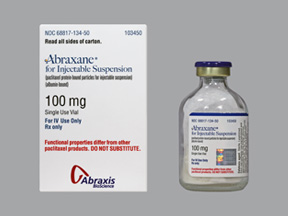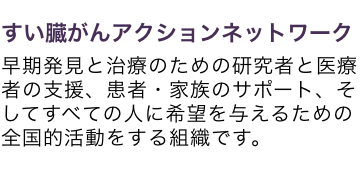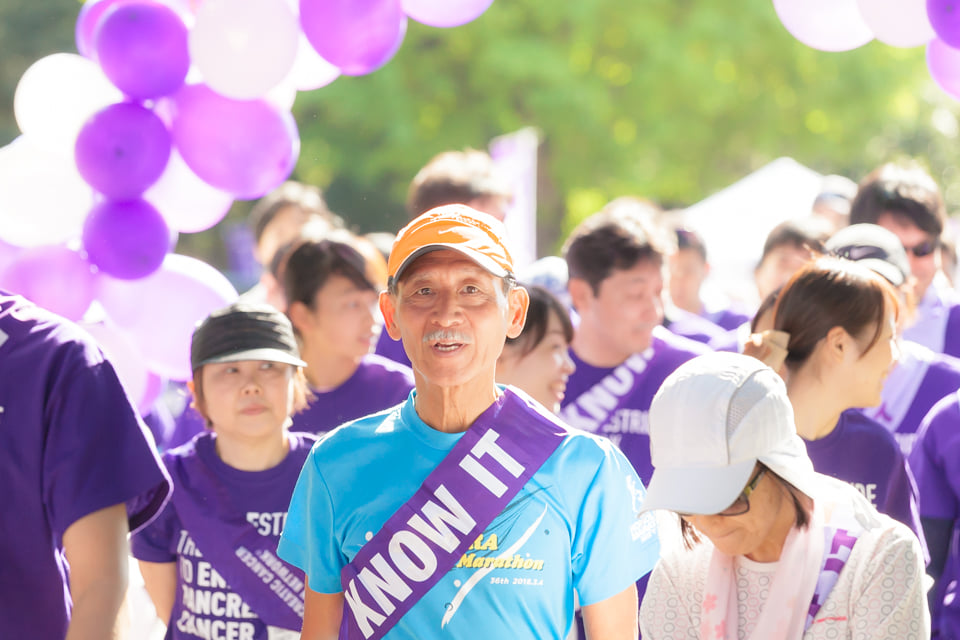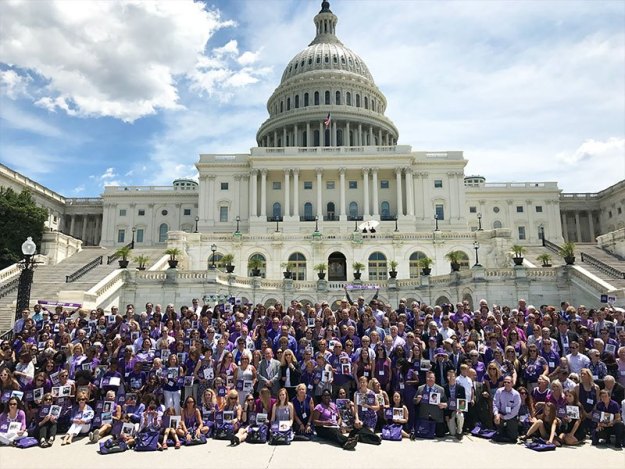
海外ニュース:アメリカでもアブラキサンの出荷調整始まる
大鵬薬品工業から第5報 来年1月下旬まで供給持続、海外製造所の追加承認取得
2021年11月11日
アブラキサンがアメリカFDAのDrug Shortage List(※)に10月4日付で掲載され、ブリストルマイヤースクイブ社より、下記のニュースレターが米国の医療関係者に発信されていたことがパンキャン本部の調べで判明した。日本市場におけるアブラキサンの供給は大鵬薬品工業株式会社が行っており、パンキャンジャパンからは9月25日付で大鵬薬品工業株式会社宛に患者向けの情報発出を含む下記3点のアクションをお願いする要望書を提出している。
1) 安定供給の早急な復活を内容とする緊急ステートメントを患者向けに発出すること。
2) 今般の「アブラキサン点滴静注用 100 ㎎」の供給停止の原因となった米国アリゾ ナ州フェニックス工場とは別のイリノイ州メルローズパーク工場で製造される「アブ ラキサン点滴静注用 100 ㎎」を日本市場向けに提供するよう米ブリストル・マイヤー ズ スクイブ(アブラキシスサイエンス社)に働きかけ、緊急輸入すること。
3) フィニックス工場にて同様な問題が発生しても、2度と供給停止が起こらないようリスクマネジメントの対策をたて患者向けに発出すること。
大鵬薬品は、アブラキサンの供給停止に関するプレスリリースを医療関係者向けに3回、患者向けに2回発信しているが、フィニックス工場の再稼働の見通しについては一切言及していない。10月12日付で第4報、11月11日付けで第5報がリリースされ、アメリカにおける在庫調整の結果、国内におけるアブラキサンの供給は来年1月下旬まで継続できる見通しとの報告がなされた。
大鵬薬品からの第5報:
・厚生労働省より薬事手続きを迅速に進めるなどのご協力を得て、新たな海外製造所の追加承認が得られましたこと。
・海外在庫調整および出荷調整の継続により欠品が12月中旬から、更に来年1月下旬頃までの延長に目処がつきましたこと。
新たな海外製造所の追加により、その製造所で既に製造された海外在庫の輸入が可能となりましたが、今後の新規に製造される製品の輸入につきましては調整中であり、まだ安定供給には至っておりませんことお詫び申し上げます。また、前回の報告させて頂きました従来製造所の再稼働につきましても再開時期についての詳細がまだ分かっていない
状況でございます。こちらも詳細な情報を得次第、ご報告させて頂きます。
第5報の詳細については、大鵬薬品工業のHPを参照されたい。https://www.taiho.co.jp/
日本では8月26日に日本臨床腫瘍学会、日本癌治療学会、日本膵臓学会、日本胃癌学会、日本乳癌学会、日本肺癌学会など6学会から「アブラキサン点滴静注用100mg供給停止に関する関連学会からの合同声明文」が公表された。治療を継続中の患者を最優先するほか、胃がん、乳がん、肺がん患者についてはパクリタキセルに切り替えるなど代替治療を積極的に検討するよう求めた。ただ、パクリタキセルに関しては、ファイザー、日本化薬の「ホスピーラ」から出荷調整が公表されており、アブラキサン出荷停止の影響は拡大しており、医療関係者および患者への不安が広がっている。
この学会合同声明文では、アブラキサンによる治療に効果がある継続中の患者を最優先するとし、新規の治療を開始する患者については、①代替治療への切り替えが困難な膵がん患者やアルコール不耐(パクリタキセルへの代替困難)の患者の治療を優先、②胃がん・乳がん・肺がん患者にはアブラキサンをパクリタキセルに切替える、または他の治療法に切り替えるなど代替治療を検討するよう求めている。
パンキャンジャパンではロスアンゼルスに所在するパンキャン本部を通してBMSにアプローチし、情報提供を求めてきたが、いままでアメリカではアブラキサンの供給制限などの支障がでていなかったこともあり難しかった。しかし、アブラキサンがFDAのDrugShortageListに掲載されたことから、影響を受ける他の肺がん、乳がんの患者団体とともにBMSに対して工場の再稼働についての情報を求めるとしている。
以下、アメリカの医療関係者向けに発信されたニュースレターの翻訳である。
ーーーーーーーーーーーーーーーーーーーーーーーーーーーーーーーーーーーーーーーーーー
親愛なる医療専門家、
このコミュニケーションの目的は、ABRAXANE®(注射用懸濁液用のパクリタキセルタンパク質結合粒子)(アルブミン結合)の製造関連の供給制限に関する最新情報を共有することです。
ABRAXANE®forInjectableSuspension(注射用懸濁液用のパクリタキセルタンパク質結合粒子)は、FDAの医薬品不足のウェブサイトで参照されているように、製品の製造とリリースが遅れているため、現在割り当て中です。現在の在庫と流通は、患者の供給への潜在的な影響を最小限に抑えるために割り当てられています。現在市販されているABRAXANE®の品質に影響はありません。
追加の限定在庫が卸売業者/流通業者にリリースされました。顧客は手持ちの在庫に応じて計画を立て、特定の割り当てに関して卸売業者/流通業者と緊密に協力する必要があります。
緊急要請のためのABRAXANEの限られた量の在庫は完全に配布されました。現時点では、新しいリクエストは受け付けていません。以前に送信されたリクエストは処理され、すべての通知が送信されました。リクエストの量に基づいて、すべてのリクエストを実行できたわけではありません。現在および将来、利用可能なすべての在庫が卸売業者/流通業者にリリースされます。
現時点では、限られた供給と一時的な割り当てが予想されます。 BMSは、施設を運用に戻すことについて引き続き進展を遂げています。供給制約の期間に関して、2021年11月中旬に更新情報を提供する予定です。現在の状況を監視および修正するためにリソースに優先順位を付けましたが、これは進化し続ける状況のままです。
治療を行う医師が適切と判断した場合は、ABRAXANEが唯一の治療選択肢となる可能性のある患者に割り当てることを検討してください。患者は、治療に関して質問がある場合は、治療を行う医師に連絡する必要があります。
私たちの患者さんへの取り組みは私たちの優先事項であり、患者さんにとってのABRAXANEの重要性を認識しています。私たちは、できるだけ早く状況を解決するためにあらゆる努力をしています。状況に応じて最新情報を提供する予定です。
この手紙に含まれる情報またはABRAXANEの安全で効果的な使用について質問がある場合は、1-877-417-1523で医療情報課に連絡することもできます。
この書簡は、ABRAXANEの使用に関連する利点とリスクの完全な説明を意図したものではありません。以下の重要な安全性情報および完全な処方情報を参照してください。
ーーーーーーーーーーーーーーーーーーーーーーーーーーーーーーーーーーーー
From: Bristol Myers Squibb このメールアドレスはスパムボットから保護されています。閲覧するにはJavaScriptを有効にする必要があります。
Sent: <MM/DD/YEAR HH:MM AM/PM>
To: <First Name><LastName>
Subject: Bristol Myers Squibb—Update on Manufacturing-related supply constraints for BMS Product
Dear Healthcare Professional,
The purpose of this communication is to share an update with you on manufacturing-related supply constraints for ABRAXANE® (paclitaxel protein-bound particles for injectable suspension) (albumin-bound).
ABRAXANE® for Injectable Suspension (paclitaxel protein-bound particles for injectable suspension) is currently on allocation, due to delays in the manufacturing and release of product, as referenced on the FDA Drug Shortage website. Current inventory and distribution are being allocated to minimize potential impact to patient supply. There is no impact to the quality of ABRAXANE® currently on the market.
Additional limited inventory has been released to wholesalers/distributors. Customers should plan accordingly with the inventory on hand and work closely with wholesalers/distributors regarding specific allocations.
The limited amount of inventory of ABRAXANE for emergency requests have been fully distributed; we will not be taking new requests at this time. Requests submitted previously have been processed and all notifications have been sent. Based on the volume of requests, not all requests were able to be fulfilled. Currently and in the future, all available inventory will be released to wholesalers/distributors.
At this time, we anticipate limited supply and temporary allocations. BMS continues progress on returning its facility to operations. We intend to provide an update in mid-November 2021 regarding the duration of the supply constraints. We have prioritized resources to monitor and remedy the current situation, but this remains an evolving situation.
If deemed appropriate by the treating physician, consider allocating for patients whom ABRAXANE may be the only treatment option. Patients should contact their treating physician with any questions they may have concerning treatment.
Our commitment to patients is our priority, and we recognize the importance of ABRAXANE for patients. We are making every effort to resolve the situation as early as possible. We intend to provide updates as the situation progresses.
You may also contact Medical Information at 1-877-417-1523 if you have any questions about the information contained in this letter or the safe and effective use of ABRAXANE.
This letter is not intended as a complete description of the benefits and risks related to the use of ABRAXANE. Please refer to the IMPORTANT SAFETY INFORMATION and Full Prescribing Information below.
INDICATIONS
ABRAXANE is indicated for the treatment of breast cancer after failure of combination chemotherapy for metastatic disease or relapse within 6 months of adjuvant chemotherapy. Prior therapy should have included an anthracycline unless clinically contraindicated.
ABRAXANE is indicated for the first-line treatment of locally advanced or metastatic non–small cell lung cancer, in combination with carboplatin, in patients who are not candidates for curative surgery or radiation therapy.
ABRAXANE is indicated for the first-line treatment of patients with metastatic adenocarcinoma of the pancreas, in combination with gemcitabine.
IMPORTANT SAFETY INFORMATION
WARNING -– SEVERE MYELOSUPPRESSION
Do not administer ABRAXANE therapy to patients who have baseline neutrophil counts of less than 1500 cells/mm3.
Monitor for neutropenia, which may be severe and result in infection or sepsis. Perform frequent complete blood cell counts on all patients receiving ABRAXANE
CONTRAINDICATIONS
Baseline neutrophil counts of <1500 cells/mm3
A history of severe hypersensitivity reactions to ABRAXANE
WARNINGS AND PRECAUTIONS
Severe Myelosuppression
Severe myelosuppression (primarily neutropenia) is dose-dependent and a dose-limiting toxicity of ABRAXANE. In clinical studies, Grade 3-4 neutropenia occurred in 34% of patients with metastatic breast cancer (MBC), 47% of patients with non–small cell lung cancer (NSCLC), and 38% of patients with pancreatic cancer
Monitor for severe neutropenia and thrombocytopenia by performing complete blood cell counts frequently, including prior to dosing on Day 1 (for MBC) and Days 1, 8, and 15 (for NSCLC and for pancreatic cancer) Do not administer ABRAXANE to patients with baseline absolute neutrophil counts (ANC) of less than 1500 cells/mm3
In the case of severe neutropenia (<500 cells/mm3 for 7 days or more) during a course of
ABRAXANE therapy, reduce the dose of ABRAXANE in subsequent courses in patients with either MBC or NSCLC
In patients with MBC, resume treatment with every-3-week cycles of ABRAXANE after ANC recovers to a level >1500 cells/mm3 and platelets recover to a level >100,000 cells/mm3
In patients with NSCLC, resume treatment if recommended at permanently reduced doses for both weekly ABRAXANE and every-3-week carboplatin after ANC recovers to at least 1500 cells/mm3 and platelet count of at least 100,000 cells/mm3 on Day 1 or to an ANC of at least 500 cells/mm3 and platelet count of at least 50,000 cells/3 on Days 8 or 15 of the cycle
In patients with adenocarcinoma of the pancreas, withhold ABRAXANE and gemcitabine if the ANC is less than 500 cells/mm3 or platelets are less than 50,000 cells/mm3 and delay initiation of the next cycle if the ANC is less than 1500 cells/mm3 or platelet count is less than 100,000 cells/mm3 on Day 1 of the cycle. Resume treatment with appropriate dose reduction if recommended Severe Neuropathy
Sensory neuropathy is dose- and schedule-dependent
If ≥ Grade 3 sensory neuropathy develops, withhold ABRAXANE treatment until resolution to Grade 1 or 2 for MBC or until resolution to ≤ Grade 1 for NSCLC and pancreatic cancer followed by a dose reduction for all subsequent courses of ABRAXANE
Sepsis
Sepsis occurred in 5% of patients with or without neutropenia who received ABRAXANE in combination with gemcitabine
Biliary obstruction or presence of biliary stent were risk factors for severe or fatal sepsis
If a patient becomes febrile (regardless of ANC), initiate treatment with broad-spectrum antibiotics
For febrile neutropenia, interrupt ABRAXANE and gemcitabine until fever resolves and ANC ≥1500 cells/mm3, then resume treatment at reduced dose levels
Pneumonitis
Pneumonitis, including some cases that were fatal, occurred in 4% of patients receiving ABRAXANE in combination with gemcitabine
Monitor patients for signs and symptoms and interrupt ABRAXANE and gemcitabine during evaluation of suspected pneumonitis
Permanently discontinue treatment with ABRAXANE and gemcitabine upon making a diagnosis of pneumonitis
Severe Hypersensitivity
Severe and sometimes fatal hypersensitivity reactions, including anaphylactic reactions, have been reported Do not rechallenge patients who experience a severe hypersensitivity reaction to ABRAXANE with this drug
this drug
Cross-hypersensitivity between ABRAXANE and other taxane products has been reported and may include severe reactions such as anaphylaxis. Closely monitor patients with a previous history of hypersensitivity reaction to ABRAXANE with this drug
Use in Patients With Hepatic Impairment • The exposure and toxicity of paclitaxel can be increased in patients with hepatic impairment. Closely monitor patients with hepatic impairment for severe myelosuppression
ABRAXANE is not recommended in patients who have a total bilirubin >5 x ULN or AST >10 x ULN
For MBC and NSCLC, the starting dose should be reduced for patients with moderate or severe hepatic impairment
For pancreatic adenocarcinoma, ABRAXANE is not recommended for patients with moderate to severe hepatic impairment (total bilirubin >1.5 x ULN and AST ≤10 x ULN)
Albumin (Human)
ABRAXANE contains albumin (human), a derivative of human blood
Embryo-Fetal Toxicity
Based on mechanism of action and findings in animals, ABRAXANE can cause fetal harm when administered to a pregnant woman
Advise females of reproductive potential of the potential risk to a fetus
Advise females of reproductive potential to use effective contraception and avoid becoming pregnant during treatment with ABRAXANE and for at least six months after the last dose of
ABRAXANE
Advise male patients with female partners of reproductive potential to use effective contraception and avoid fathering a child during treatment with ABRAXANE and for at least three months after the last dose of ABRAXANE
ADVERSE REACTIONS
Randomized Metastatic Breast Cancer (MBC) Study
The most common adverse reactions (≥20%) with single-agent use of ABRAXANE vs paclitaxel injection in the MBC study are alopecia (90%, 94%), neutropenia (all cases 80%, 82%; severe 9%, 22%), sensory neuropathy (any symptoms 71%, 56%; severe 10%, 2%), abnormal ECG (all patients 60%, 52%; patients with normal baseline 35%, 30%), fatigue/asthenia (any 47%, 39%; severe 8%, 3%), myalgia/arthralgia (any 44%, 49%; severe 8%, 4%), AST elevation (any 39%, 32%), alkaline phosphatase elevation (any 36%, 31%), anemia (any 33%, 25%; severe 1%, <1%), nausea (any 30%, 22%; severe 3%, <1%), diarrhea (any 27%, 15%; severe <1%, 1%), and infections (24%, 20%), respectively
Sensory neuropathy was the cause of ABRAXANE discontinuation in 7/229 (3%) patients Other adverse reactions of note with the use of ABRAXANE vs paclitaxel injection included vomiting (any 18%, 10%; severe 4%, 1%), fluid retention (any 10%, 8%; severe 0%, <1%), mucositis (any 7%, 6%; severe <1%, 0%), hepatic dysfunction (elevations in bilirubin 7%, 7%), hypersensitivity reactions (any 4%, 12%; severe 0%, 2%), thrombocytopenia (any 2%, 3%; severe <1%, <1%), neutropenic sepsis (<1%, <1%), and injection site reactions (<1%, 1%), respectively. Dehydration and pyrexia were also reported
Renal dysfunction (any 11%, severe 1%) was reported in patients treated with ABRAXANE (n=229)
In all ABRAXANE-treated patients (n=366), ocular/visual disturbances were reported (any 13%; severe 1%)
Severe cardiovascular events possibly related to single-agent ABRAXANE occurred in approximately 3% of patients and included cardiac ischemia/infarction, chest pain, cardiac arrest, supraventricular tachycardia, edema, thrombosis, pulmonary thromboembolism, pulmonary emboli, and hypertension
Cases of cerebrovascular attacks (strokes) and transient ischemic attacks have been reported Non–Small Cell Lung Cancer (NSCLC) Study
The most common adverse reactions (≥20%) of ABRAXANE in combination with carboplatin are anemia, neutropenia, thrombocytopenia, alopecia, peripheral neuropathy, nausea, and fatigue The most common serious adverse reactions of ABRAXANE in combination with carboplatin for NSCLC are anemia (4%) and pneumonia (3%)
The most common adverse reactions resulting in permanent discontinuation of ABRAXANE are neutropenia (3%), thrombocytopenia (3%), and peripheral neuropathy (1%)
The most common adverse reactions resulting in dose reduction of ABRAXANE are neutropenia (24%), thrombocytopenia (13%), and anemia (6%)
The most common adverse reactions leading to withholding or delay in ABRAXANE dosing are neutropenia (41%), thrombocytopenia (30%), and anemia (16%)
The following common (≥10% incidence) adverse reactions were observed at a similar incidence in ABRAXANE plus carboplatin–treated and paclitaxel injection plus carboplatin–treated patients: alopecia (56%), nausea (27%), fatigue (25%), decreased appetite (17%), asthenia (16%), constipation (16%), diarrhea (15%), vomiting (12%), dyspnea (12%), and rash (10%); incidence rates are for the ABRAXANE plus carboplatin treatment group
Adverse reactions with a difference of ≥2%, Grade 3 or higher, with combination use of ABRAXANE and carboplatin vs combination use of paclitaxel injection and carboplatin in NSCLC are anemia (28%, 7%), neutropenia (47%, 58%), thrombocytopenia (18%, 9%), and peripheral neuropathy (3%, 12%), respectively
Adverse reactions with a difference of ≥5%, Grades 1-4, with combination use of ABRAXANE and carboplatin vs combination use of paclitaxel injection and carboplatin in NSCLC are anemia (98%, 91%), thrombocytopenia (68%, 55%), peripheral neuropathy (48%, 64%), edema peripheral (10%,
4%), epistaxis (7%, 2%), arthralgia (13%, 25%), and myalgia (10%, 19%), respectively • Neutropenia (all grades) was reported in 85% of patients who received ABRAXANE and carboplatin vs 83% of patients who received paclitaxel injection and carboplatin
Pancreatic Adenocarcinoma Study
Among the most common (≥20%) adverse reactions in the phase III study, those with a ≥5% higher incidence in the ABRAXANE/gemcitabine group compared with the gemcitabine group are neutropenia (73%, 58%), fatigue (59%, 46%), peripheral neuropathy (54%, 13%), nausea (54%,
48%), alopecia (50%, 5%), peripheral edema (46%, 30%), diarrhea (44%, 24%), pyrexia (41%,
28%), vomiting (36%, 28%), decreased appetite (36%, 26%), rash (30%, 11%), and dehydration (21%, 11%)
Of these most common adverse reactions, those with a ≥2% higher incidence of Grade 3-4 toxicity in the ABRAXANE/gemcitabine group compared with the gemcitabine group, respectively, are neutropenia (38%, 27%), fatigue (18%, 9%), peripheral neuropathy (17%, 1%), nausea (6%, 3%), diarrhea (6%, 1%), pyrexia (3%, 1%), vomiting (6%, 4%), decreased appetite (5%, 2%), and dehydration (7%, 2%)
Thrombocytopenia (all grades) was reported in 74% of patients in the ABRAXANE/gemcitabine group vs 70% of patients in the gemcitabine group
The most common serious adverse reactions of ABRAXANE (with a ≥1% higher incidence) are pyrexia (6%), dehydration (5%), pneumonia (4%), and vomiting (4%) The most common adverse reactions resulting in permanent discontinuation of ABRAXANE were peripheral neuropathy (8%), fatigue (4%), and thrombocytopenia (2%)
The most common adverse reactions resulting in dose reduction of ABRAXANE are neutropenia (10%) and peripheral neuropathy (6%)
The most common adverse reactions leading to withholding or delay in ABRAXANE dosing are neutropenia (16%), thrombocytopenia (12%), fatigue (8%), peripheral neuropathy (15%), anemia (5%), and diarrhea (5%)
Other selected adverse reactions with a ≥5% higher incidence for all-grade toxicity in the
ABRAXANE/gemcitabine group compared to the gemcitabine group, respectively, are asthenia
(19%, 13%), mucositis (10%, 4%), dysgeusia (16%, 8%), headache (14%, 9%), hypokalemia (12%,
7%), cough (17%, 7%), epistaxis (15%, 3%), urinary tract infection (11%, 5%), pain in extremity
7%), cough (17%, 7%), epistaxis (15%, 3%), urinary tract infection (11%, 5%), pain in extremity
(11%, 6%), arthralgia (11%, 3%), myalgia (10%, 4%), and depression (12%, 6%)
Other selected adverse reactions with a ≥2% higher incidence for Grade 3-4 toxicity in the
ABRAXANE/gemcitabine group compared to the gemcitabine group are thrombocytopenia (13%, 9%), asthenia (7%, 4%), and hypokalemia (4%, 1%)
Postmarketing Experience With ABRAXANE and Other Paclitaxel Formulations • Severe and sometimes fatal hypersensitivity reactions. Cross-hypersensitivity between ABRAXANE and other taxanes has been reported
Congestive heart failure, left ventricular dysfunction, and atrioventricular block. Most patients were previously exposed to cardiotoxic drugs, such as anthracyclines, or had underlying cardiac history Extravasation. Closely monitor the ABRAXANE infusion site for possible infiltration during drug administration
DRUG INTERACTIONS
Caution should be exercised when administering ABRAXANE concomitantly with medicines known to inhibit or induce either CYP2C8 or CYP3A4 USE IN SPECIFIC POPULATIONS
Pregnancy
Based on the mechanism of action and findings in animals, ABRAXANE can cause fetal harm when administered to a pregnant woman. Advise females of the potential risk to a fetus and to avoid becoming pregnant while receiving ABRAXANE
Lactation
Paclitaxel and/or its metabolites were excreted into the milk of lactating rats. Nursing must be discontinued when receiving treatment with ABRAXANE and for two weeks after the last dose
Females and Males of Reproductive Potential
Based on animal studies and mechanism of action, ABRAXANE can cause fetal harm when administered to a pregnant woman
Verify the pregnancy status of females of reproductive potential prior to starting treatment with
ABRAXANE
Advise females of reproductive potential to use effective contraception and avoid becoming pregnant during treatment with and for at least six months after the last dose of ABRAXANE [see Warnings and Precautions]
Advise males with female partners of reproductive potential to use effective contraception and avoid fathering a child during treatment with ABRAXANE and for at least three months after the last dose of ABRAXANE [see Warnings and Precautions]
Based on findings in animals, ABRAXANE may impair fertility in females and males of reproductive potential
Pediatric
The safety and effectiveness of ABRAXANE in pediatric patients have not been established
Geriatric
A higher incidence of epistaxis, diarrhea, dehydration, fatigue, and peripheral edema was found in patients 65 years or older who received ABRAXANE for MBC in a pooled analysis of clinical studies
Myelosuppression, peripheral neuropathy, and arthralgia were more frequent in patients ≥65 years of age treated with ABRAXANE and carboplatin in NSCLC
Diarrhea, decreased appetite, dehydration, and epistaxis were more frequent in patients 65 years or older compared with patients younger than 65 years old who received ABRAXANE and
or older compared with patients younger than 65 years old who received ABRAXANE and gemcitabine in adenocarcinoma of the pancreas
Renal Impairment
There are insufficient data to permit dosage recommendations in patients with severe renal impairment or end stage renal disease (estimated creatinine clearance <30 mL/min)
DOSAGE AND ADMINISTRATION
DO NOT SUBSTITUTE FOR OR WITH OTHER PACLITAXEL FORMULATIONS
Dose reductions or discontinuation may be needed based on severe hematologic, neurologic, cutaneous, or gastrointestinal toxicity
Please see full Prescribing Information, including Boxed WARNING.
You are encouraged to report negative side effects of prescription drugs to the FDA. Visit www.fda.gov/medwatch, or call 1-800-FDA-1088.
Bristol Myers Squibb is committed to transparency. For information on the list price of ABRAXANE as well as information regarding average out-of-pocket costs and assistance programs, please visit our pricing information page.
You can stop future Bristol Myers Squibb email marketing communications by clicking here or mailing your request to Bristol Myers Squibb, P.O. Box 869, Palatine, IL 60078‑ 0869.
LEGAL NOTICE | PRIVACY POLICY | UNSUBSCRIBE
© 2021 Bristol-Myers Squibb Company. All Rights Reserved.
ABRAXANE is a trademark of Bristol-Myers Squibb Company.
ABRAXANE® is a registered trademark of Abraxis BioScience, LLC.
Abraxis BioScience, LLC is a wholly owned subsidiary of Bristol-Myers Squibb Company.
2013-US-2100041 10/21










